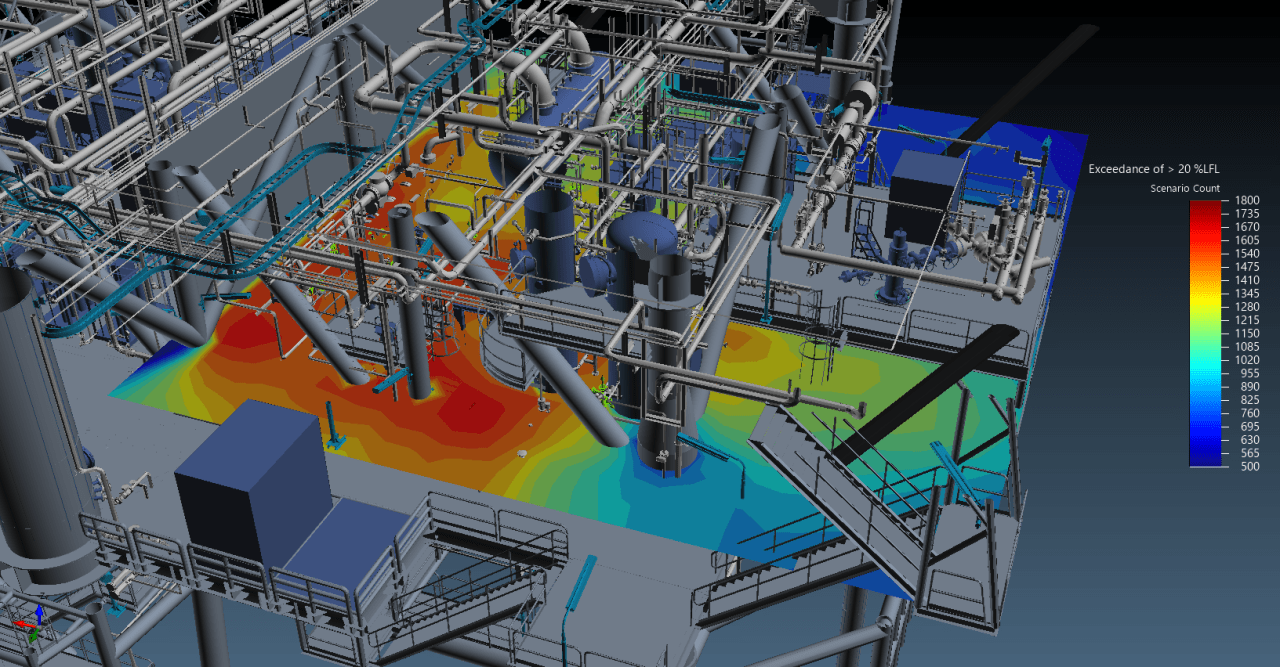Technology is changing fast in the world of Fire and Gas Mapping. Risk-Based methods for Gas Mapping offer a future of improved technology at lower cost, but as engineers we must apply a detailed, rigorous analysis before reaping the benefits.
The good news is that much of this analysis has already been done. CFD modeling – the engine of Risk-Based Gas Mapping – has been well validated in academia, wind tunnels, and industrial-scale tests. Risk-based analysis has been the mainstay of the safety industry for more than 30 years and is widely accepted as the best approach for evaluating hazardous events.
What is new is combining these validated techniques into a methodology for gas mapping. There are many key questions that need to be addressed:
- What metrics can be used to achieve convergence of the detector layout (invariance of detector count with number of simulations)?
- How should we prioritize the level of detail of the input parameters, such as wind speed, wind direction, leak sources, and hole sizes? For example, is it better to model 8 wind directions and 2 wind speeds, or 4 wind directions and 4 wind speeds?
- How sensitive are the results to changes in leak frequency, or consequence weighting? Is there is a significant difference between scenario-based, frequency-based, and risk-based mapping?
To help answer these questions, we have created a data set for Risk-Based Gas Mapping based on an offshore module. The data set includes CFD results for 10,000 simulations, run using in:Flux. The idea is to test subsets of these simulations and evaluate the gas detector layout that each subset produces, in order to gain insight to the above questions.
More good news: we are making this data set public. Anyone with an in:Flux license can download the data set to perform their own experiments and validation.
And for those who want to know…the 10,000 simulations were completed in 1 week, using 6 Azure Virtual Machines at a total cost of $1,300. That’s one simulation, costing only 13 cents, completed every minute.

Find us